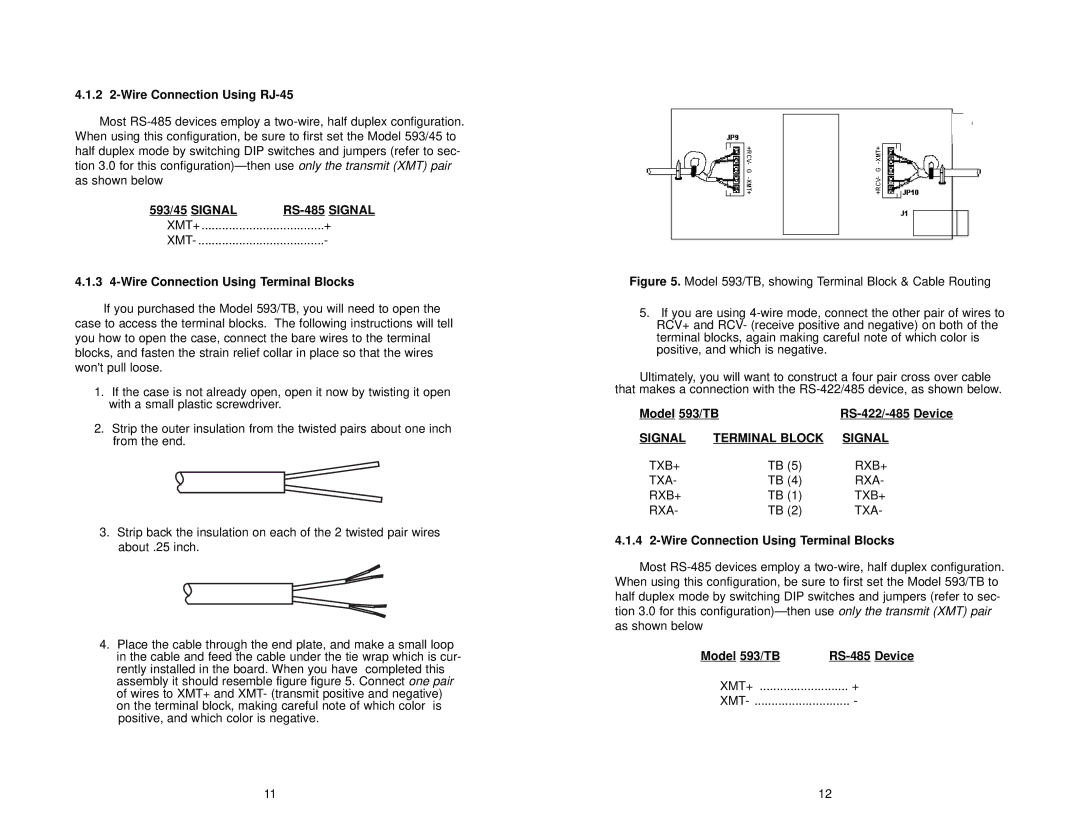593/25, 593/45, 593/TB, RS-422, RS-485, 593/45, 593/TB, RS-422, RS-485 specifications
The Patton Electronics series, notably the 593/45, 593/TB, 593/25, RS-422, and RS-485, stands at the forefront of reliable communication technologies. These devices, designed to facilitate seamless connectivity and data transmission, are crucial in various industrial and commercial applications.The Patton 593/45 is a versatile multi-port serial device server, engineered to convert serial devices into IP-based resources. It supports multiple protocols, allowing for the easy integration of legacy systems into modern networks. One of its standout features is its ability to communicate over long distances without the signal degradation typical of traditional communication methods.
Equipped with robust security features, including SSL and SSH, the 593/45 ensures that data remains protected during transmission. This model also supports virtual COM port functionality which simplifies the workflow for users by allowing them to access devices as if they were connected directly to their computers.
Similarly, the 593/TB model provides tailored functionalities with time-stamping capabilities, enhancing data integrity and management in real-time applications. This is particularly beneficial for industries such as telecommunications and utilities where precise data logging is vital.
The RS-422 and RS-485 standards are integral to the functionality of these devices, providing differential signaling that minimizes noise and allows for communication over significant distances, typically up to 4000 feet for RS-485 networks. RS-422 supports one transmitter and multiple receivers, making it suitable for point-to-multipoint applications, while RS-485 enhances this by allowing multiple devices to communicate over a single twisted-pair cable, fostering a robust networking environment.
Additionally, the 593/25 model offers enhanced port density, further optimizing space and resource use in industrial setups. This feature is essential for users looking to maximize connectivity while reducing hardware requirements.
In summary, Patton Electronics devices such as the 593/45, 593/TB, and 593/25, leveraging protocols like RS-422 and RS-485, provide advanced features for secure, long-distance serial communication. Their design meets the demand for high-performance networking solutions in diverse environments, ensuring that businesses can reliably connect their critical assets and maintain smooth operations across various sectors. With these technologies, users benefit from improved data integrity, efficiency, and security, making Patton Electronics a trusted name in the communication technology landscape.

